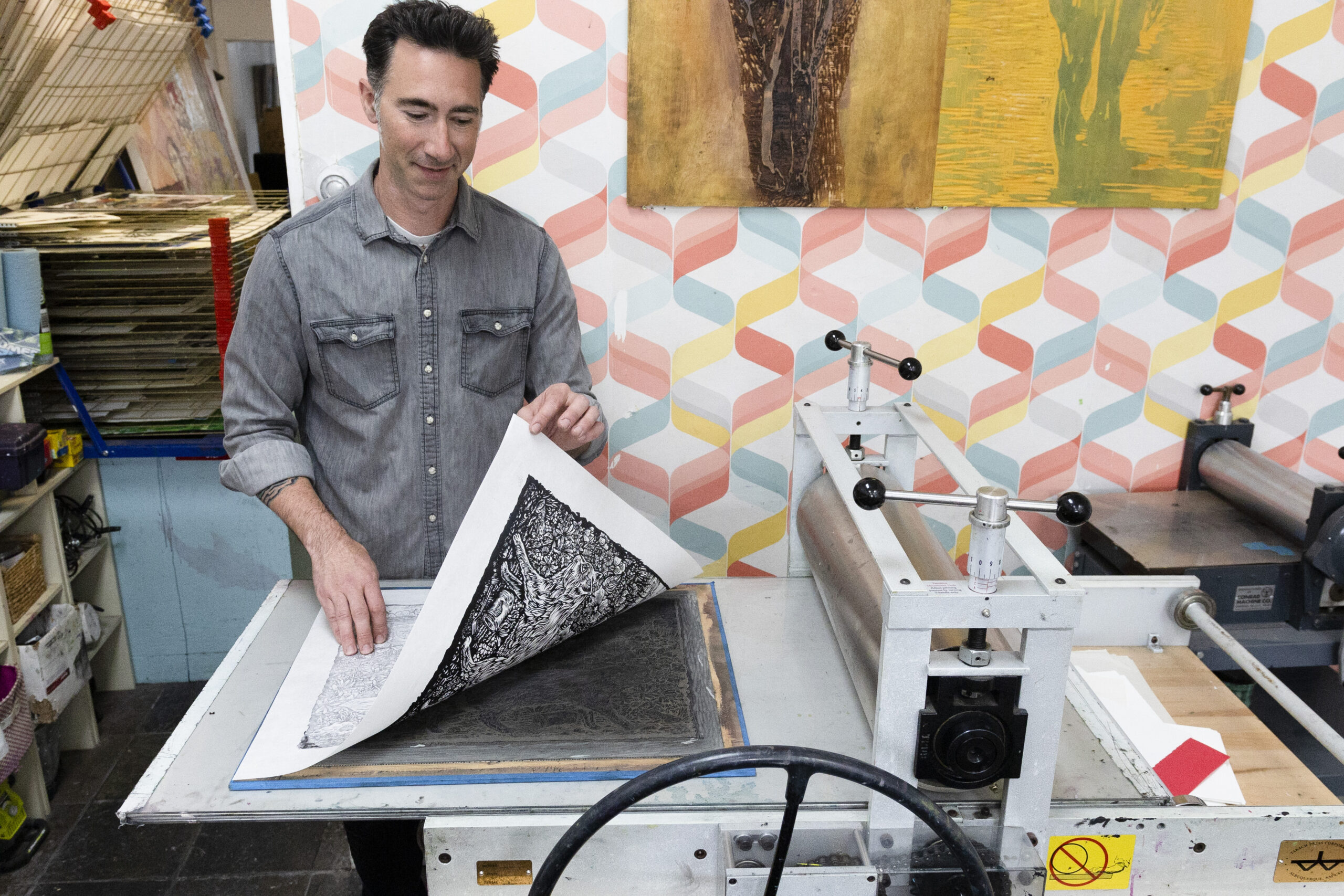If you happen to be strolling down Swampscott’s downtown area, you might stumble upon a small shop on the corner of Humphrey and Redington streets filled with different types of printmaking artwork.
Skulls, vehicles, and animals, all in different shapes and sizes, line the front of the shop as you walk in. They are all done by artists and co-owners of MiraMar Print Lab, Sam Atoui and Adrian Rodriguez.
The shop, located at 148 Humphrey St., is a block-printing lab. Kids, starting at the age of 8, and adults go there to take classes on printmaking, an art that can be traced all the way back to first-century China.
Both Atoui and Rodriguez attended art school separately, and Rodriguez joked that he had “unintentionally” gotten into art school at Tufts University.
“I just focused on drawing and watercolor painting, and Sam went to RISD (Rhode Island School of Design) to study architecture,” he said.
Atoui ended up switching to printmaking, which she enjoyed the procedure of.
“I think I liked the idea of a process associated with it,” she said.
When they were preparing to leave college, the two pondered how they would be able to use their printmaking skills in the real world. They got other jobs in the workforce, and continued drawing and painting on their own until a space opened up in Swampscott that allowed them to get a press and use it as a printmaker space.
In 2019, that space became MiraMar Print Lab. The name MiraMar is similar to the Spanish phrase meaning “look to the sea,” which Atoui found to be fitting with the shop peering out at Nahant Bay. While that certainly played a role in the name of the shop, it is actually named after their two kids, Amira (Mira) and Max Atoui-Rodriguez (Mar).
Atoui spends most of her days cleaning up the studio from the prior day’s classes and working on her own art, before teaching classes in the afternoon and evening.
“The students come in here. They walk here from school so class starts at 3:30, but they will be here around 3:00,” she said.
The classes typically go until 5:30 p.m., and night classes run from 7 to 9 p.m. She runs each class two nights a week for eight weeks. For Rodriguez, printmaking serves as his part-time role and he comes to the shop during evening hours, which he jokingly calls “vampire printmaking.”
On the weekends, Atoui and Rodriguez will pack up their artwork and head out to different art fairs and markets to sell their pieces. They travel to different areas of Boston, participating in SoWa events on Sundays and New England Open Markets in Copley Square on Saturdays. They also frequently take trips to Salem, especially in the fall during the Haunted Happenings events.
All of the artwork at the front of the store is for sale.
“That was something that we started during the pandemic just to compensate for the lack of individuals we could have in here,” Atoui said. “We are artists, it’s been a lot of fun and it’s been really successful, and now that’s half the business.”
The other half involves a lot of teaching — and a lot of learning.
The most common printmaking technique used in the classes is called relief, where a block is carved out and what is left in the block gets inked. The kids participate in a number of projects, including making books, where they are currently working on CMYK color separation.
In the back of the shop, each of the kids, who attend classes nearly year round, have their own cubbies filled with items they need for printmaking.
“A lot of them have been here since 2019,” said Atoui. “They’re mostly middle and high-school students.”
She said that the students were one of the main reasons that they were able to make it through the pandemic.
“It’s really thanks to those guys,” Atoui said. “The youth had such restrictions on them with schools being closed. This place was small. We had five students, it’s not like I could really have more, but they kept coming. A vast majority stayed here through that, and I think it was good for them and good for me.”
To this day, they are still coming in after school, and both Atoui and Rodriguez have taught them a lot about the process of printmaking. Rodriguez said that while the kids have fun with the projects, they are truly learning about the process and the history behind the art of printmaking.
“They’re learning how to draw, they’re learning the fundamentals, not just carving into a piece of wood. They have to know how to plan, which is, with printmaking, a lot of the effort,” he said.
Atoui and Rodriguez have provided a space where they can display their passion for art through their work, and each class they try to give students important tools and lessons that can be used either in art or in other professions.
“If not, they’ll have the skills because I really think that art and looking is fundamental to how we interact with our world and environment around us,” said Atoui. “Just taking the time to look and make connections with your eye and your hand — these are skills that you can apply in a million different ways.”

